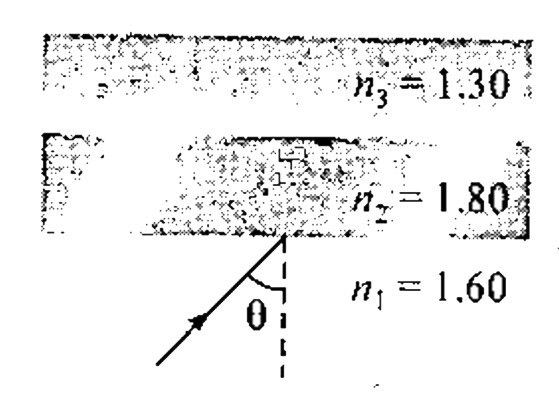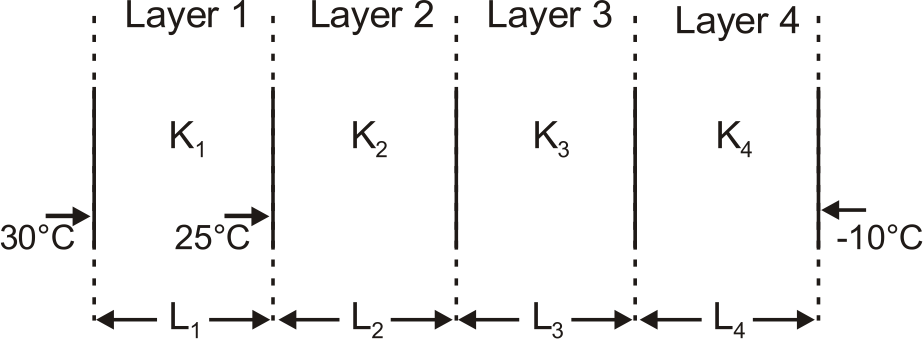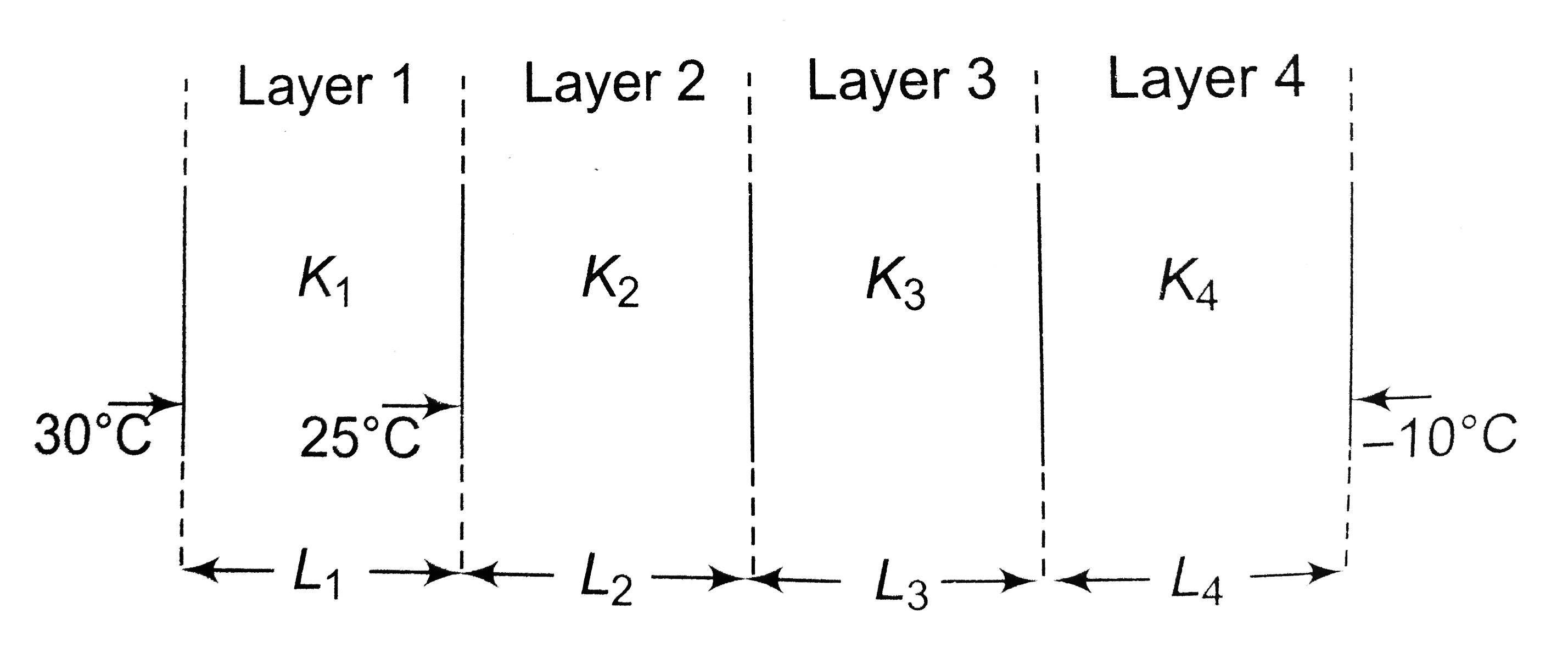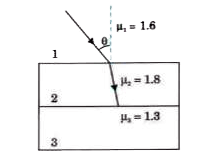The temperature of the interface between layer 2and3 is:
11∘C
8∘C
7.2∘C
5.4∘C
The correct Answer is:A
ΔQΔT∣∣∣layer2 = ΔQΔt∣∣∣layer4
⇒0.06×A×51.5×10−2=0.04×A×ΔT2.8×10−2
⇒ΔT=14∘C
T3=(3+14)∘C=11∘C.
Topper's Solved these Questions
- THERMAL PROPERTIES OF MATTERBOOK - A2ZCHAPTER - THERMAL PROPERTIES OF MATTEREXERCISE - Transmission Of Heat : Radiation
28 Videos
- THERMAL PROPERTIES OF MATTERBOOK - A2ZCHAPTER - THERMAL PROPERTIES OF MATTEREXERCISE - Problems Baesd On Mixed Concepts
18 Videos
- THERMAL PROPERTIES OF MATTERBOOK - A2ZCHAPTER - THERMAL PROPERTIES OF MATTEREXERCISE - Calorimetry
41 Videos
- ROTATIONAL DYNAMICSBOOK - A2ZCHAPTER - ROTATIONAL DYNAMICSEXERCISE - Chapter Test
29 Videos
- UNIT, DIMENSION AND ERROR ANALYSISBOOK - A2ZCHAPTER - UNIT, DIMENSION AND ERROR ANALYSISEXERCISE - Chapter Test
28 Videos
Similar Questions
A wall consists of two layer, one of thickness 3 cm and other of 6 cm. the thermal conductivities of the materials of these layers are K and 3K respectively. The temperature of the outer surfaces of the two layers are −5∘C and 20∘C respectively. determine the temperature of the surface of contact of the two layers in the steady state.
View SolutionIn figure, light refracts from material 1 into a thin layer of material 2, crosses that layer, and then is incident at the critical angle on the interface between materials 2 and 3.

(a) What is the angle θ?
(b) If θ is decreased, is there refraction of light into material 3 ?
View Solution
Knowledge Check

Figure shows in cros section a wall consisting of four layers with thermal conductivities K1=0.06W/mK
K3=0.04W/mK and K4=0.10W/mK. The layer thicknesses are L1=1.5cm,L3=2.8 cm and L4=3.5cm the temperature of interfaces is as shown in figure. energy transfer through the wall is in steady state.
Q. The temperature of the inteface between layers 2 and 3 isA11∘CB8∘CC7.2∘CD5.4∘CFigure shows in cross section a wall consisting of four layers with thermal conductivities K1=0.06W/mK,K3=0.04W/mKandK4=0.10W/mK. The layer thickness are L1=1.5cm,L3=2.8cmandL4=3.5cm. The temperature of interfaces is as shown in figure. energy transfer through the wall is in steady state. the temperature of the interface between layer 3and4 is:
 A−1∘CB−3∘CC2∘CD0∘C
A−1∘CB−3∘CC2∘CD0∘C...A... is a force per unit length acting in the plane of the interface between the plane and other substance. Here, A refers to
ASurface tensionBSurface energyCSurface stressDSurface strain
Two materials having coefficients of thermal conductivity ‘3 K’ and ‘K’ and thickness ‘d’ and ‘3 d’, respectively, are joined to form a slab as shown in the figure. The temperatures of the outer surfaces are θ2 and θ1 respectively, (θ2>θ1) The temperature at the interface is:

View SolutionHeat is conducted through a slab composed of paralel layers of two different materials of conductivities 134.4 SI units and 58.8 SI units and of thickness 3.6cm and 4.2cm respectively. The temperature of the outer faces of the compound slab are 96∘C and 8∘C. Find (i) the temperature of the interface, (ii) temperature gradient in each section of the slab.
View SolutionTwo soap bubble of radius 2r and 3r are in contact with each other. If the radius of curvature of the interface between the bubble in nr then find the value of n:
View SolutionIn question number 7, the temperature of other interfaces (in .∘C) is
View SolutionA ray of light refracts from medium 1 into a thin layer of medium 2, crosses the layer and is incident at the critical angle on the interface between the medium 2 and 3 as shown in the figure. If the angle of incidence of ray is θ, the values of θ is

View Solution
